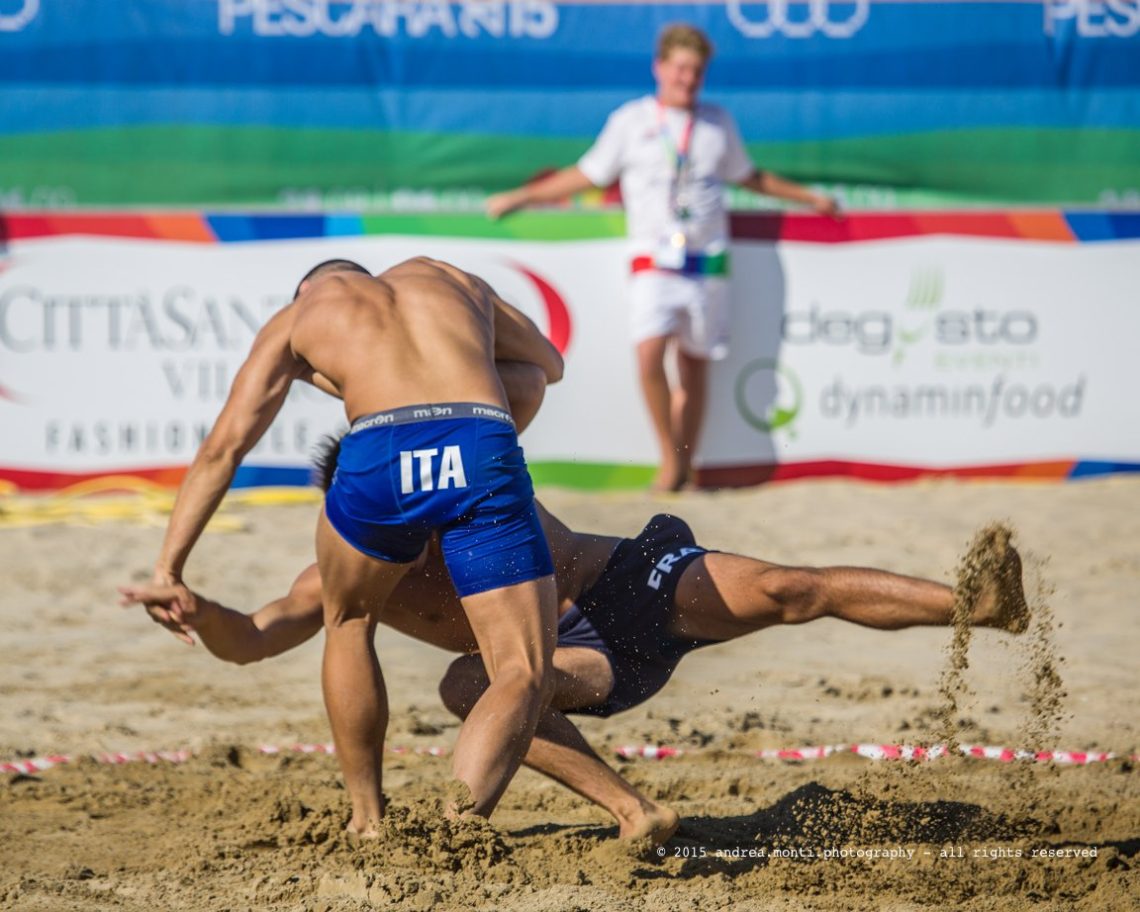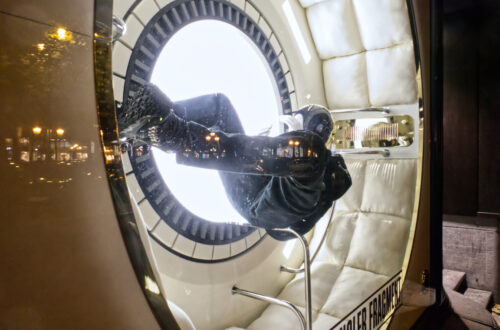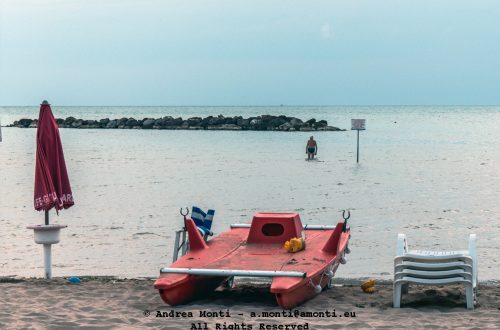
@ Mediterranean Beach Games 2015 – Wrestling, Italy vs France (And a primer on sport photography – Part 5)

Part 1 – Intro, Before the event, getting your media pass
Part 2 – Before the event, having your media pass working for you
Part 3 – During the event, get ready for the show
Part 4 – During the event, how to choose which event attend to
3 – Shooting the game
As I said before, the chances of getting a good exposure greatly improve if you are (or have become) comfortable with the game. But knowing how the ball rolls worth nothing if you’re not in the right position to take the shot.
a – Reclaiming your space from other photographers
Event (and thus sport) photography is a rough business.
Every photo reporter (whether on assignment of freelancing) isn’t there for the glory of the art, they’re there because they are paid for good exposure. So, don’t expect pleasantness or “professional courtesy”. Of course this is not an absolute rule, but more often than not, you will find yourself in situation where you need to be “assertive” to reclaim your space and the “right” to shoot your picture.
A word to the wise: by all mean avoid direct confrontation with another photographer or whoever else, especially if it turns out into a monkey dance or ego pissing. The security crew is not supposed to act on a right/wrong basis, so in case of problem they just want to have the trouble stopped. You argue with them making your case, and in the meantime the game ended (as ended your clearance to work in that event.)
b – Spot the spots
If you made your homework, you already know which are the places and angles that guarantee the most effective pictures, in relationship to game and light. But you can’t always get the spot you desire so you should have a “B-list” to use, just in case.
If everything went South and you’ve lost your “A” and “B” spot you still have one last chance: waiting for something unusual to happens in the “wrong” part of the field: an unexpected fall, a funny – or dramatic – expression or – literally, an “act of God”. Of course this is a pure bet, where all the odds are against you. But when you’ve nothing better, that’s better than nothing.
c – Be water, my friend
This Bruce Lee’s quote might sound mystical but that’s the actual core of the whole sport photography business: to get a good photo you must “go with the flow” of the game, without actually thinking. As in Kyudo (the Japanese Way of archery) you don’t aim at the target, you become the target, in sport photography you don’t look at the game, you “are” the game.
By becoming part of it you will be able to anticipate what is going to happens and, in some way, to “create” the photo in the sense that you pre-skectch the shot, and press the trigger when all the element of the image are properly placed.
As I told, this advice might sound “mystical” but it actually not. Talk to seasoned sport photographers and ask them if they got their best exposure by rational calculus or pure instinct. More often then not they will answer “trained instinct”, meaning that the broad understanding and mixing of the photography techniques and the particularity of a specific sport nurtured the non rational perception of the reality they were immersed in.
d – Be stealth (or, at least, unobtrusive)
As a photographer you’re an optional part of the show. You’re not supposed to be in proximity of the field and you shouldn’t be close to the athletes, but fact is that you are.
While you might (and rightly so) be compelled to take a specific shot, this can’t happens at game or athlete’s expenses. So, it is of the utmost importance that you are conscious of your surrounding to avoid breaking a moment of concentration or distracting the athlete in a crucial moment of his performance. In a discipline like gymnastics this might have dire consequences.
e – Turn to the other side
When all your colleagues-competitors aim at a specific point, aim to the other side. This way you increase the possibility to have a unique photo that doesn’t have to compete to hundred of the same kind.
This is not to say that you must forget about goals or homerun, that’s rather a suggestion to look for non conventional pictures.
f – Spray-and-pray vs One Shot One Kill
Burst are convenient. Full stop.
I don’t want to enter the quarrel about the legitimacy of burst-photography (or 4K-extracted stills), but a thing is true: if you are on an assignment, you must use the tool the guarantees you the best results, and in sport photography going in “burst-mode” is a most practice choice. But mind: this means powerful (and costly) cameras, bigger memory space, powerful post processing equipment, longer time-to-publishing process (if you shoot raw only, longer and longer.)
Personally I still prefer the one-shot-one-kill approach, especially when I shoot sports I know fairly well. But when the operating conditions are less than ideal, I have no problem in using bursts.




